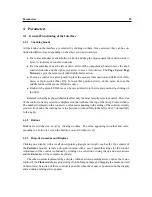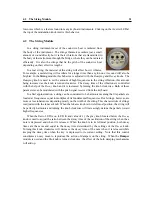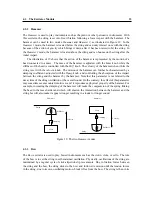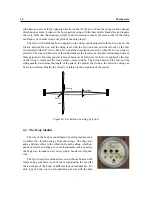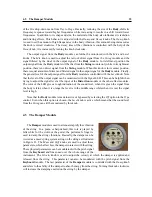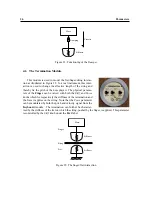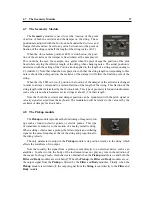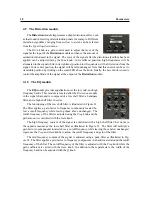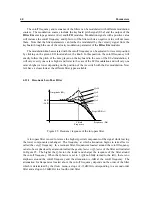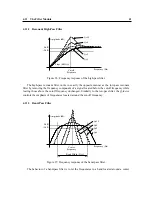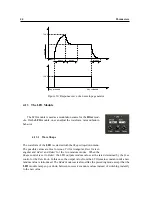
4.12
The Filter Env Module
43
Amplitude (dB)
Frequency (Hz)
F1
F2
F3
Male Voice
Female Voice
Formant Frequencies
Figure 29: Frequency response of the formant filter.
and child (right position). The Q knob is used to cycle between vowels. Note that changing these
parameters can be automated by using the different modulation signals.
4.12
The Filter Env Module
The Filter Env envelope generator module is based on a standard
ADSR (attack, decay, sustain, release) approach including velocity
modulation.
The envelope module generates a four-segment envelope: attack,
decay, sustain, release. The attack time is adjusted using the A knob.
The attack time can also be modulated with the velocity signal received from the Keyboard in
such a way that that the higher the velocity signal the shorter the attack time will be, the intensity
of this effect being controlled using the modulation knob below of the A knob. When the knob
is in its leftmost position, the attack is only determined by the value of the A knob, turning the
knob clockwise will increase the influence of the velocity signal until the attack time is strictly
determined by the inverse of the velocity signal when V reaches its maximum value. The decay
time is set with the D knob. The sustain phase of the envelope generator lasts from the end of the
decay phase until the key is released. When the S knob is fully turned to the left, the sustain level
is zero and there is no sustain phase while fully turned to the right, the sustain level is at maximum
and there is no decay phase. Note that the sustain phase can also be modulated with the velocity
signal from the keyboard. Finally, when the key is released, the envelope generator toggles to the
release phase and the envelope signal decreases from its sustain level to zero in a time set by the R
knob.
Summary of Contents for STRINGSTUDIO
Page 1: ...USER MANUAL ...

